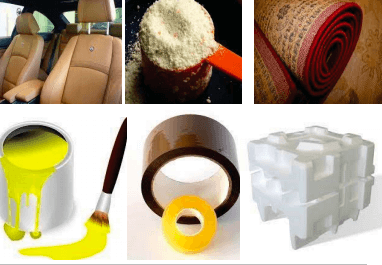As a popular commercial solvent with a wide array of usage, acetone has witnessed a steady growth in its demand over the last decade, across different geographies. The chemical properties of acetone make it attuned to the purpose of synthesizing different chemicals which in turn further broadens the scope of acetone’s end-use. Over the years, acetone has come to be critical to the manufacturing of paints, varnishes, detergents, carpets, adhesives, and even chemical explosives. As a highly volatile chemical, acetone is also extensively used in the pharmaceutical and perfume industry.
While there is a predicted growth prospect in the acetone market over the forecast period, currently, the market is adequately supplied. Hence the bargaining power rests with the buyers. This, in turn, impacts the overall market revenue of acetone. Further, currently, the acetone market is hugely Asia-Pacific oriented. To fully realize the commercial potential of the acetone markets and avert the risks of deceleration, it is imperative to diversify into other markets and penetrate other industries.
- The global demand for acetone market is on the rise with a reported compound annual growth rate (CAGR) of 3.4 percent. The global acetone market consumption is anticipated to touch 7.74 million metric tonnes by the year 2022.
- The acetone market is currently experiencing an upsurge in demand from developing economies in Latin America, the Middle East, and the Asia Pacific region. Parallelly, the Asia Pacific also has the highest concentration of acetone market capacity, evaluated at 45 percent of the total global supply.
- The two most prominent segments of Acetone are Bisphenol A (BPA) and Methyl Methacrylate(MMA). They are the major market drivers of the acetone market. While BPA is broadly used as a solvent in paints, varnishes, coatings, etc., MMA is largely used in pharmaceuticals and cosmetics industry. They roughly account for 34 percent and 30 percent of the acetone market share, respectively.
- Approximately 96 percent of the total production of acetone is a by-product of phenol production. Consequently, the market dynamics of phenol production largely impacts the supply chain of acetone as well as the feedstock price movements.
- The acetone market, by and large, is over-supplied, stemming mainly from the prolific production of phenol.
- Despite having a 46.1 percent share of the acetone market capacity, the Asia Pacific continues to be the major importer of acetone whereas Europe is the biggest exporter of acetone.
Acetone Market: Demand Analysis and Forecast
- The end-user industries where acetone was traditionally used has spread across a wider spectrum over the recent past and is expected to further diversify through the forecast period. MMA has found wider application in the arms and ammunitions industry with pellets manufacturing using MMA. Further, acetone is used in other moldings such as vehicle lights, spectacle lenses, etc. This was boosted the overall market demand for acetone.
- The rising demand for acetone is spurred by the enhanced application of acetone in downstream industries like construction, automobiles, and personal care.
- China dominates the demand for acetone in the Asia Pacific region and the booming demand for acetone in the electronics and personal care industries predict a further rise in the growth of the market. Nearly 37 percent of the acetone market revenue in China arises from the personal care and cosmetics industry.
- Another factor that is driving the market demand for acetone is the simultaneous rise in the end-user applications of BPA and MMA. Both segments are anticipated to grow over the forecast period at the rates of 4.5 percent and 4.3 percent respectively.
Acetone Market: Risk Analysis
- North America and South America have high maturity markets for acetone; consequently, most off the capacity building of the acetone market is concentrated in the Asia Pacific, especially in highly active zones like China. Approximately 0.833 million metric tonnes of capacity is likely to be added in China. This is likely to alter the global trade flows since China’s dependency on imports from North America and Europe will substantially decline.
- The top acetone manufacturers in Asia like Formosa Chemicals Group, Ineos Group, Sinopec Group, Mitsui Chemicals, and Cepsa Quimica project their quotes on an average which is used as a base by other market players for arriving at their contract prices. This is turn often proves risky due to the volatile feedstock prices and therefore, the overall growth rate is affected.
- In recent years, environmental regulations, especially by the European Commission on the usage of solvents, have created an impact on the acetone industry. Research and Development need to be dedicated to addressing this issue to avoid any dent in the projected growth rate.
Conclusion
The acetone industry has a versatile set of applications in various industries which is likely to propel its demand over the forecast period. At the same time, a rise in regional capacities of acetone production will also boost the overall growth of the acetone market.




